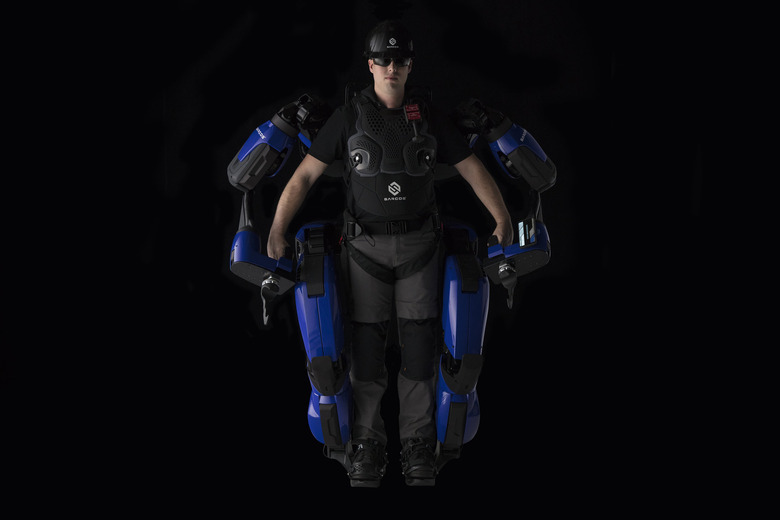Meet The Company That Showed Off A Robot Exoskeleton For Humans Today At CES
I first caught up with the team at Salt Lake City-based Sarcos Robotics a couple of years ago and was impressed from the outset at the company's vision of commercializing powerful, futuristic-looking full-body robot exoskeletons to augment the work of humans. The idea being that the exoskeletons would allow their users to do more while also saving lives and preventing injuries in the workplace.
Straight away, you could start to see various applications of the exoskeletons which make the wearer look like a cross between a robot and some kind of sci-fi superhero, such as by helping to clean up debris at a disaster site, moving heavy steel beams in a factory and even letting humans venture safely into hazardous sites to perform tasks like shutting down a fuel valve. At the time, the Sarcos team told me it was working to bring its line of human-scale exoskeletons to fruition so that it could begin marketing them commercially from the end of 2019, and thanks to an unveiling today at CES 2020 in Las Vegas the company just about hit that mark.
Today, the company announced it's teamed up with Delta Airlines to test Sarcos' Guardian XO — a battery-powered, dexterous robotic suit meant for employees to wear that can enable them to lift up to 200 pounds repeatedly for up to eight hours at a time without feeling tired or any strain. This follows Delta representatives trekking out to Sarcos' headquarters in November to get a look at the exoskeleton technology and start exploring how wearable robotics could benefit its employees.
The video above provides a glimpse at how the robotic suit works. As explained by Sarcos, it's meant for industries where lifting and manipulating heavy objects is a requirement of the job and where standard lift equipment alone isn't adequate. Delta at this point is looking at potential uses such as letting employees rely on the suit to handle freight at Delta Cargo warehouses, move maintenance components at Delta TechOps or lift heavy machinery and parts for ground support equipment.
The airline plans to test the technology in a pilot location during the first quarter of this year. "We owe it to the best airline employees on the planet to explore how emerging technology can make their jobs safer and easier," Delta senior vice president Gareth Joyce said Tuesday about the exoskeleton. "That's why we sought out a partnership with Sarcos."
When I first caught up with the team, they stressed to me that this is not meant to be some kind of futuristic precursor to building something that can replace human workers. Augment, not replace, is the keyword here, something Sarcos reiterated at CES. And while it's easy to see something here about the impact of technology on the nature of work and specifically manual labor, another angle that might be overlooked is a kind of leveling of the playing field that this technology allows. A robotic suit like this, in other words, not only allows workers to do more — it also puts weaker, more slightly built employees on par with stronger colleagues, presumably amping up the productivity of everyone.
